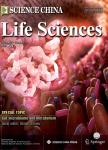Cloning and analysis of differentially expressed ESTs in swine muscle tissue
Cloning and analysis of differentially expressed ESTs in swine muscle tissue作者机构:College of Animal Science South China Agricultural University Guangzhou 510642 China College of Animal Science South China Agricultural University Guangzhou 510642 China College of Animal Science South China Agricultural University Guangzhou 510642 China College of Animal Science South China Agricultural University Guangzhou 510642 China
出 版 物:《Science China(Life Sciences)》 (中国科学(生命科学英文版))
年 卷 期:2006年第49卷第4期
页 面:342-348页
基 金:supported by Key Project of Chinese National Programs for Fundamental Research and Development(973 Programe)(Grant No.2004CB117506) Natural Science Foundation of Guangdong Province(Grant No.010277) Group Program of Natural Science Foundation of Guangdong Province(Grant No.04205804)
主 题:pig, muscle, mRNA differential display, in silico expression profile.
摘 要:The obvious difference in muscle growth; meat quality traits exists between Chinese indigenous pig; exotic pigs. In order to study the reason of these phenotypic differences; search the potential gene related to growth; meat quality traits, silver-stained mRNA differential display technique was used to detect the difference with mRNA of loin-eye muscle tissue from maturity pigs of Lantang in Guangdong Province; Large Yorkshire. One of the newly discovered expressed sequence tag (ESTsp3) was analyzed by using bioinformatic technique. The results showed: (1) nearly 2000 cDNA fragments were detected with 30 primer pairs,; 6 differentially expressed ESTs in the Ioin-eye muscle tissues from the two breeds were isolated; obtained. The differential fragments were cloned; sequenced. The all sequences were recorded in the GenBank. (2) The 786 bp fragment of ESTsp3 was obtained with in silico elongation system, the ORF analysis revealed that it existed as an 83 aa complete open reading frame,; the elongation sequences were verified by RT-PCR. The analysis of in silico expression profile showed that ESTsp3 is expressed in various growth stages; in most tissues; organs, such as soft tissue, skin, skeletal muscle; kidney, but with variant expression quantity.



